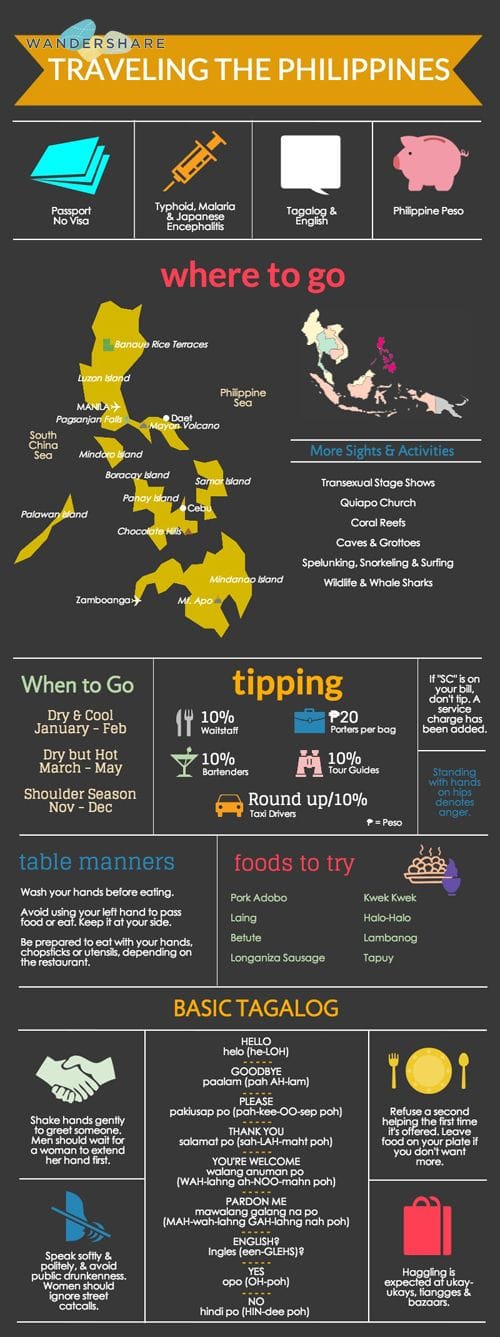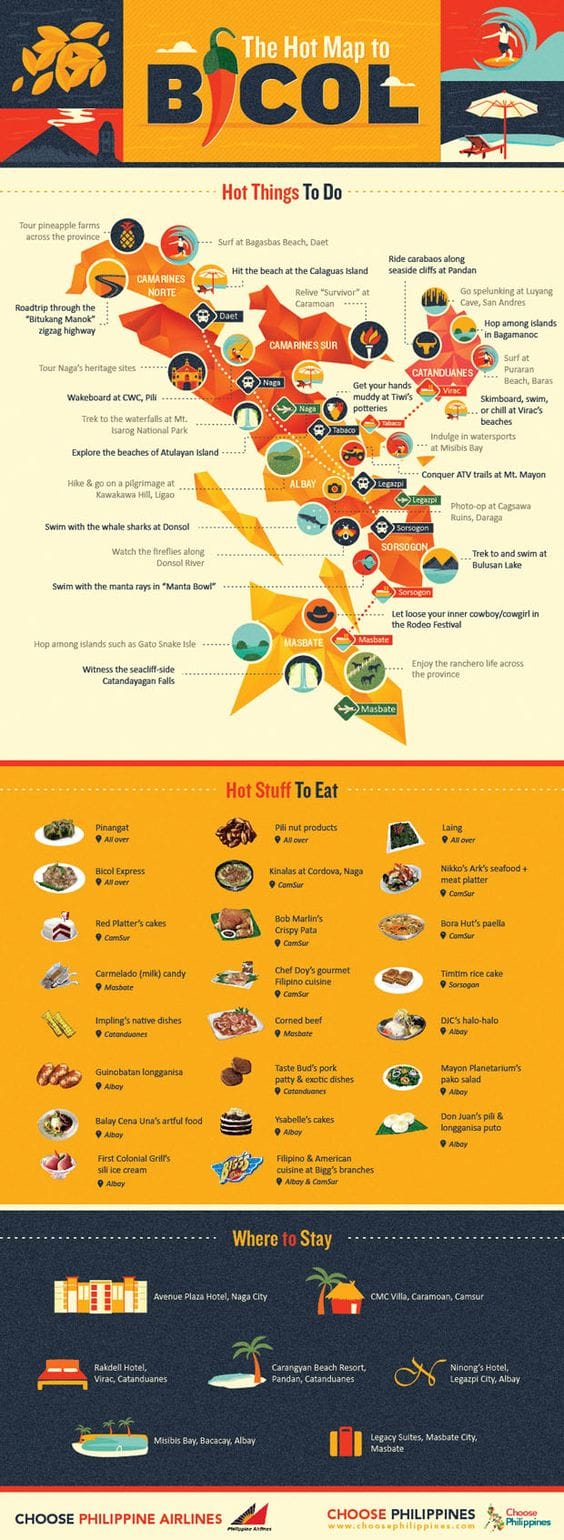STARTBODY
Home > Teach Travel Abroad Tips > Living and Teaching English in the Philippines - Habits, Customs & Curiosities
Living and Teaching English in the Philippines - Habits, Customs & Curiosities
The Philippines is one of the most popular vacation destinations in Southeast Asia and it attracts millions of tourists to its many islands every year.
The country is also a popular location for teaching EFL as English is an official language that is used extensively in business, government and the media.
If you plan on living and working in the Philippines, the following guides should provide some useful information for before and during your stay.
You will find all kinds of subjects covered, including the country’s culture and customs, local cuisine, must-see destinations and Filipino languages.
Situated in the tropics of Southeast Asia and made up of over 7,000 individual islands, the Philippines is a very popular tourist destination and a popular spot for teaching English abroad.
You will also find a few suggestions on traditional foods you might want to try and some words and phrases in Tagalog that you can learn before you arrive in the country.
This brief introductory guide to traveling the Philippines provides a few simple tips for visitors, such as the vaccinations required, what weather to expect at different times of the year and how much to tip in various situations.
With its unique mix of Asian and Spanish colonial influences, the Philippines has developed a fascinating culture and range of traditions that can be found nowhere else on Earth.
On the plus side, good luck is said to come from having large ears or by giving someone a jade stone.
During your visit there are several unusual superstitions that you might want to avoid as they are said to bring bad luck, such as brushing your hair at night and talking about your dreams before breakfast.
There are also a number of mythological beings to avoid, including gremlin like creatures known as Duwende who are fond of playing jokes on humans and female vampires called Asuwang who like to steal the souls of those they come across.
As with many countries in the region, the Philippines has an excellent reputation for the variety and quality of its street food.
After a day in the classroom you can simply take a stroll in the local area and indulge in whatever takes your fancy, whether it’s a simple snack like corn on the cob or squid rings, or something more exotic such as chicken’s feet or a soup made from bull’s testicles.
No matter where you are in the country you will find plenty of stalls serving up a range of delicious cuisine, from fried and barbecued snacks, to tropical fresh fruits and mouthwatering desserts.
Cebu Island is one of the premier tourist destinations in the Philippines as it offers a wide range of attractions to suit all ages and tastes.
Other great activities available in the area include swimming with whale sharks, jungle trekking and cave exploring.
Beach lovers are particularly well catered for, as are scuba divers who will find some of the best dive locations in the whole of Asia.
You will also find many smaller islands to explore close-by which offer all manner of attractions from luxurious spa resorts and deserted beaches, to bird watching and shark diving.
Boracay in the Philippines is without a doubt one of the most popular island destinations in the whole of Southeast Asia.
The island’s famous White Beach on the west coast has powdery white sand and crystal clear waters that are ideal for swimming and snorkeling.
As well as an abundance of activities both on and off the water, Boracay Island is also well known for its vibrant nightlife that has everything from dance clubs and live music, to fire shows and open-mic nights.
This tropical paradise has so much to offer visitors that you will probably find it hard to leave.
Elsewhere on the island you will find eight other fantastic beaches that are perfect for a range of watersports such as scuba diving, wind-surfing and kite-surfing.
Although English is commonly spoken in many areas of the Philippines, you will probably find that having a basic understanding of the local language will be a real benefit if you choose to stay in the country for more than just a short holiday.
You will find useful sections on simple pleasantries, eating out, numbers, and days of the week, as well as basic questions you might need to ask in various situations.
This handy cheat sheet provides a few basic words and phrases that you might find useful in two of the country’s most widely used languages: Tagalog and Cebuano.
Take a look at this guide before you head to the Philippines to give yourself a great head start.
The Bicol Region of the Philippines is very popular with domestic and international visitors as it offers a wide range of attractions on land and in the blue water that surrounds it.
Isarog National Park and surfing at Puraran Beach.
You will also find a list of local food specialties and a few ideas on where to stay during your visit.
This regional guide highlights some of the most popular activities and where to find them, such as trekking in Mt.
If you prefer more sedate activities, it has other great suggestions on the region’s best beaches and where to go for the best views and photo opportunities.
Often referred to as the ‘Eighth Wonder of the World’, the Banaue Rice Terraces are a breathtaking sight that you will not want to miss during your stay in the Philippines.
As well as providing a stunning backdrop to your travel photos, the area around the rice terraces offers superb options for trekking in one of the most picturesque environments in Southeast Asia.
These magnificent terraces were carved into the Ifugao Mountains around 2,000 years ago and are still used to grow rice and vegetables today.
This guide to the terraces has suggestions on the best time of year to visit, as well as some interesting facts about the area.
The Philippines is famous for its love of fiestas, with around 130 to enjoy in different parts of the country throughout the year.
Whatever the reason for the festivities, a typical Filipino fiesta will involve fairgrounds, marching bands and a range of street food to whet your appetite.
This classic fiesta menu highlights all the dishes you can expect to enjoy if you are lucky enough to get an invite.
Many of these festivals are held in honor of a particular patron saint, while the origins of others come from the ancient beliefs of the indigenous peoples of the region.
Another key feature is that people open their houses to friends, family and complete strangers, with large buffets laid on for guests.
ENDBODY











